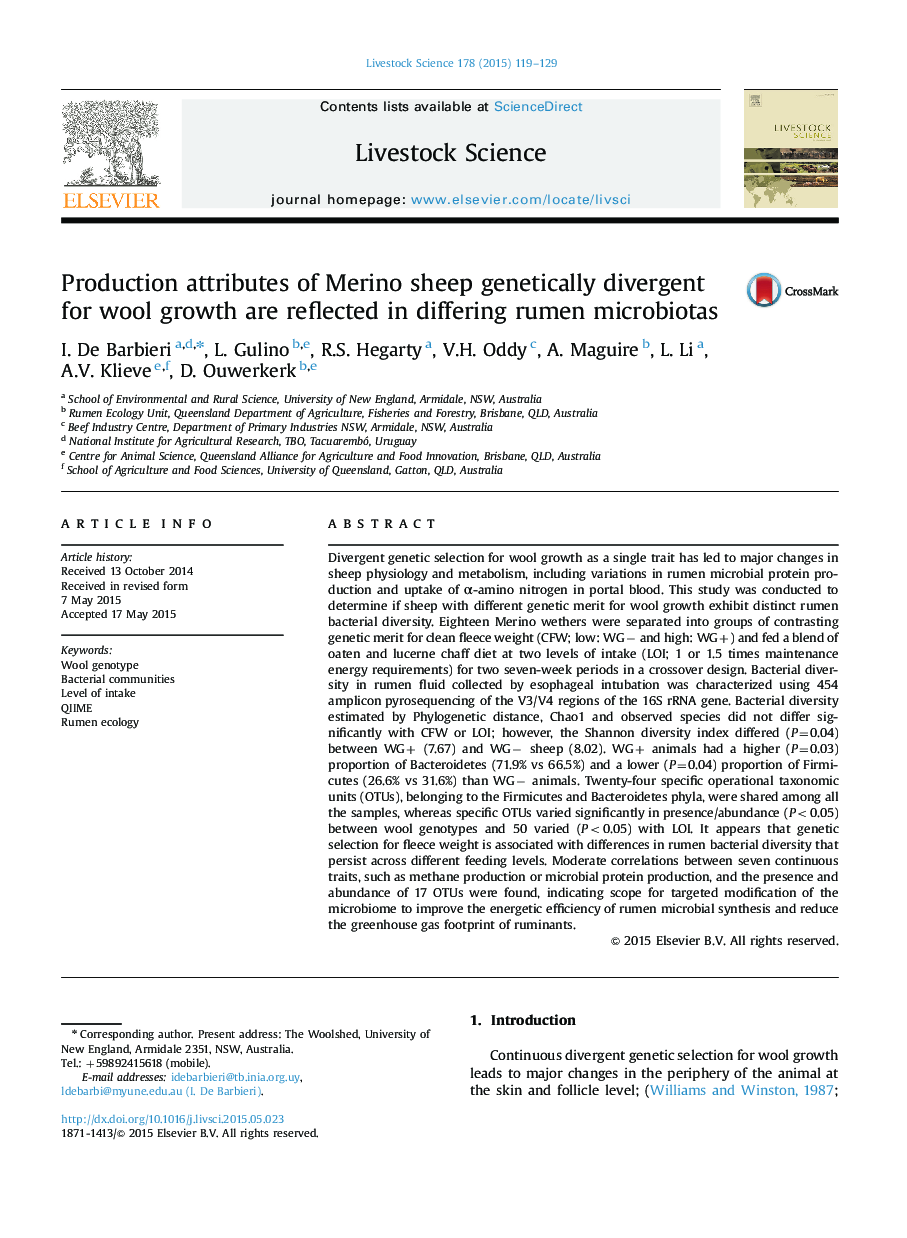| کد مقاله | کد نشریه | سال انتشار | مقاله انگلیسی | نسخه تمام متن |
|---|---|---|---|---|
| 2447068 | 1553954 | 2015 | 11 صفحه PDF | دانلود رایگان |
• Divergent wool production is associated with different rumen bacterial diversity.
• These differences persist across different feeding levels.
• These differences are not large enough to cluster as separate bacterial communities.
• Rumen fermentation traits correlated with specific gut microbes.
Divergent genetic selection for wool growth as a single trait has led to major changes in sheep physiology and metabolism, including variations in rumen microbial protein production and uptake of α-amino nitrogen in portal blood. This study was conducted to determine if sheep with different genetic merit for wool growth exhibit distinct rumen bacterial diversity. Eighteen Merino wethers were separated into groups of contrasting genetic merit for clean fleece weight (CFW; low: WG− and high: WG+) and fed a blend of oaten and lucerne chaff diet at two levels of intake (LOI; 1 or 1.5 times maintenance energy requirements) for two seven-week periods in a crossover design. Bacterial diversity in rumen fluid collected by esophageal intubation was characterized using 454 amplicon pyrosequencing of the V3/V4 regions of the 16S rRNA gene. Bacterial diversity estimated by Phylogenetic distance, Chao1 and observed species did not differ significantly with CFW or LOI; however, the Shannon diversity index differed (P=0.04) between WG+ (7.67) and WG− sheep (8.02). WG+ animals had a higher (P=0.03) proportion of Bacteroidetes (71.9% vs 66.5%) and a lower (P=0.04) proportion of Firmicutes (26.6% vs 31.6%) than WG− animals. Twenty-four specific operational taxonomic units (OTUs), belonging to the Firmicutes and Bacteroidetes phyla, were shared among all the samples, whereas specific OTUs varied significantly in presence/abundance (P<0.05) between wool genotypes and 50 varied (P<0.05) with LOI. It appears that genetic selection for fleece weight is associated with differences in rumen bacterial diversity that persist across different feeding levels. Moderate correlations between seven continuous traits, such as methane production or microbial protein production, and the presence and abundance of 17 OTUs were found, indicating scope for targeted modification of the microbiome to improve the energetic efficiency of rumen microbial synthesis and reduce the greenhouse gas footprint of ruminants.
Journal: Livestock Science - Volume 178, August 2015, Pages 119–129
